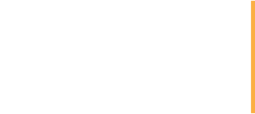JFK Assassination Files Offer Nothing But More Questions
Finally, after 25 years of waiting for the 1992 congressional mandated release date, JFK files were released well some of them were, just not the real enlightening ones that are still under review.
There was an interesting memo regarding Lee Harvey Oswald that may have slipped through the national security censorship cracks. The memo date is set on May 15th 1964. The memo reads “The bureau’s attention is called to the fact that a newspaper clipping captioned “10 years ago Oswald looked trouble bound, Officers Report” and then below that there are claims of pages that are supposed to be included but it is stamped copies destroyed. The weird thing is that there are multiple copies of the same memo found throughout the released files some with notations some without. So what was destroyed?
There was a death threat on Lee Harvey Oswald the night before he was killed according to Hoover. An anonymous call came in stating that a comittee had decided to kill Oswald. Hoover immediately contacted the Police Chief and warned them of a possible attempt on Harvey’s life. The Chief of police told Hoover they were in control of the situation and Oswald was safe and secure. The next day Hoover called again stressing his concern for Oswald and was once again met with the Chief’s reassurances. As we all know Jack Ruby came out of the shadows with his 3-day old gun and shot Oswald. The most interesting line of the report is when Hoover says:
“The thing I am concerned about, and so is Mr. Katzenbach (Deputy Attorney General), is having something issued so we can convince the public that Oswald is the Real Assassin.”
Julian Assange, creator of WikiLeaks has a put a $100,000 bounty on the JFK files that are under review, so maybe the public will get lucky and someone will leak the Truth since going through official channels is clearly not revealing the whole truth anytime soon.
Watch the News Reel Below.
https://www.youtube.com/watch?v=FD5DdOaFtfU
As Reported By NBC, Alex Johnson
Other intriguing tidbits from the JFK document drop so far:
- A Nov. 26, 1963 memo to the FBI from CIA counterintelligence chief James Angleton said that the senior reporter for the Cambridge News in England told British security officials that 25 minutes before Kennedy was shot an anonymous tipster telephoned and urged the reporter to “call the American Embassy in London for some big news and hung up.”
- William C. Sullivan, who was the third-ranking FBI official after Hoover, wrote in a Jan. 30, 1964 memo to Assistant FBI Director A.H. Belmont that Oswald “was never (sic) FBI informant, was never paid money for information, was never assigned any symbol number.” The memo was in response to allegations brought up before one of the commissions investigating the killing that Oswald was on the FBI’s payroll.
- However, another one of the newly released documents includes an excerpt of a 1975 interview with CIA Director Richard Helms for the Rockefeller Commission, established by President Ford to examine the CIA’s covert activities. The document includes this question: “Is there any information involved with the assassination of President Kennedy which in any way shows that Lee Harvey Oswald was in some way a CIA agent or an agent…” But the document ends there, with the question incomplete and no answer from Helms.
- Soviet officials thought the assassination was a conspiracy on the part of the ultraright to start a coup and worried that “some irresponsible general might launch a missile at the Soviet Union,” according to one of the just-released memos.
- Another record summarizes all the ways the CIA considered for killing Fidel Castro — poison botulism pills to slip into a drink, hiring a mobster gunman who shot him, two schemes that Helms would later call “hairbrained.” One contemplated giving Castro a skin-diving suit contaminated with a fungus. Another called for planting a seashell, filled with explosives, in an area when Castro often went diving.
